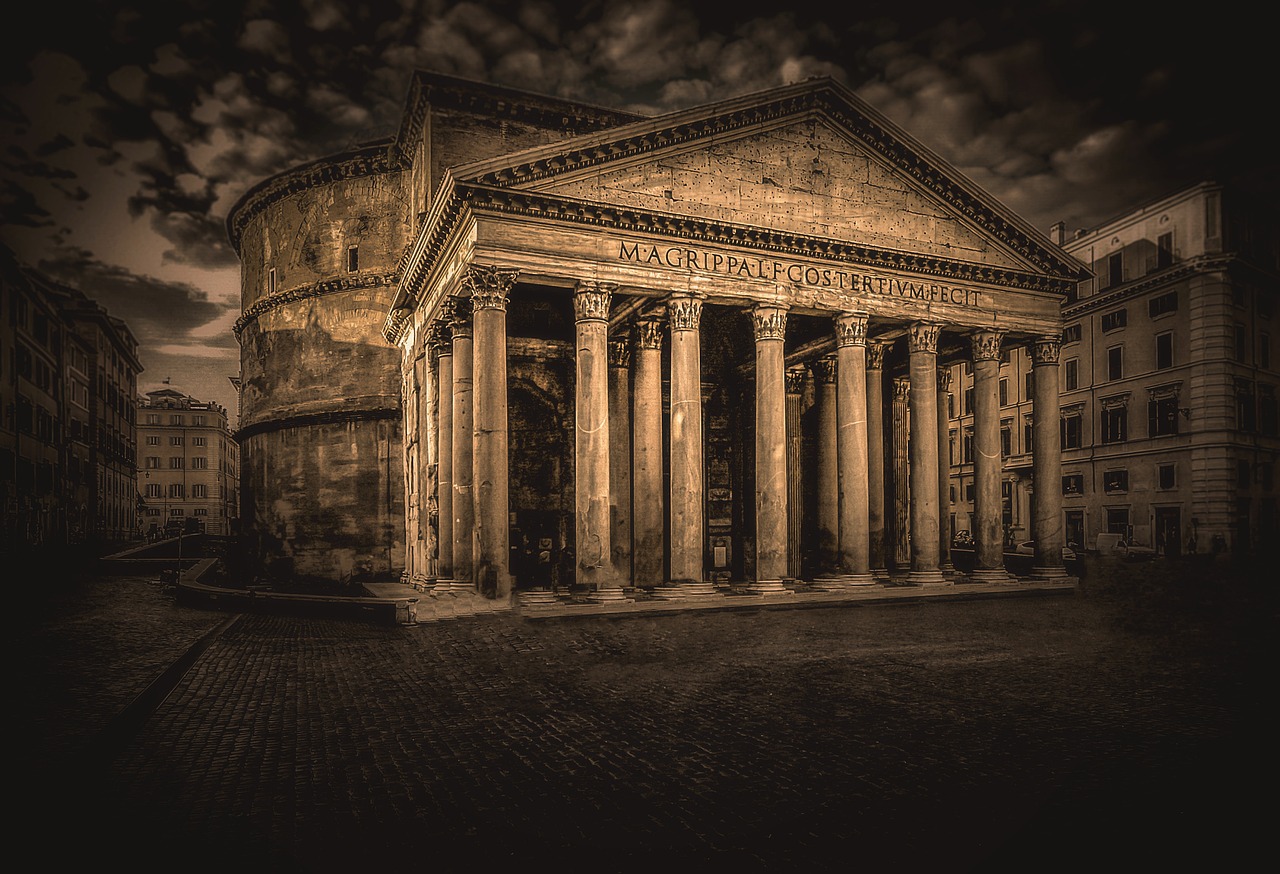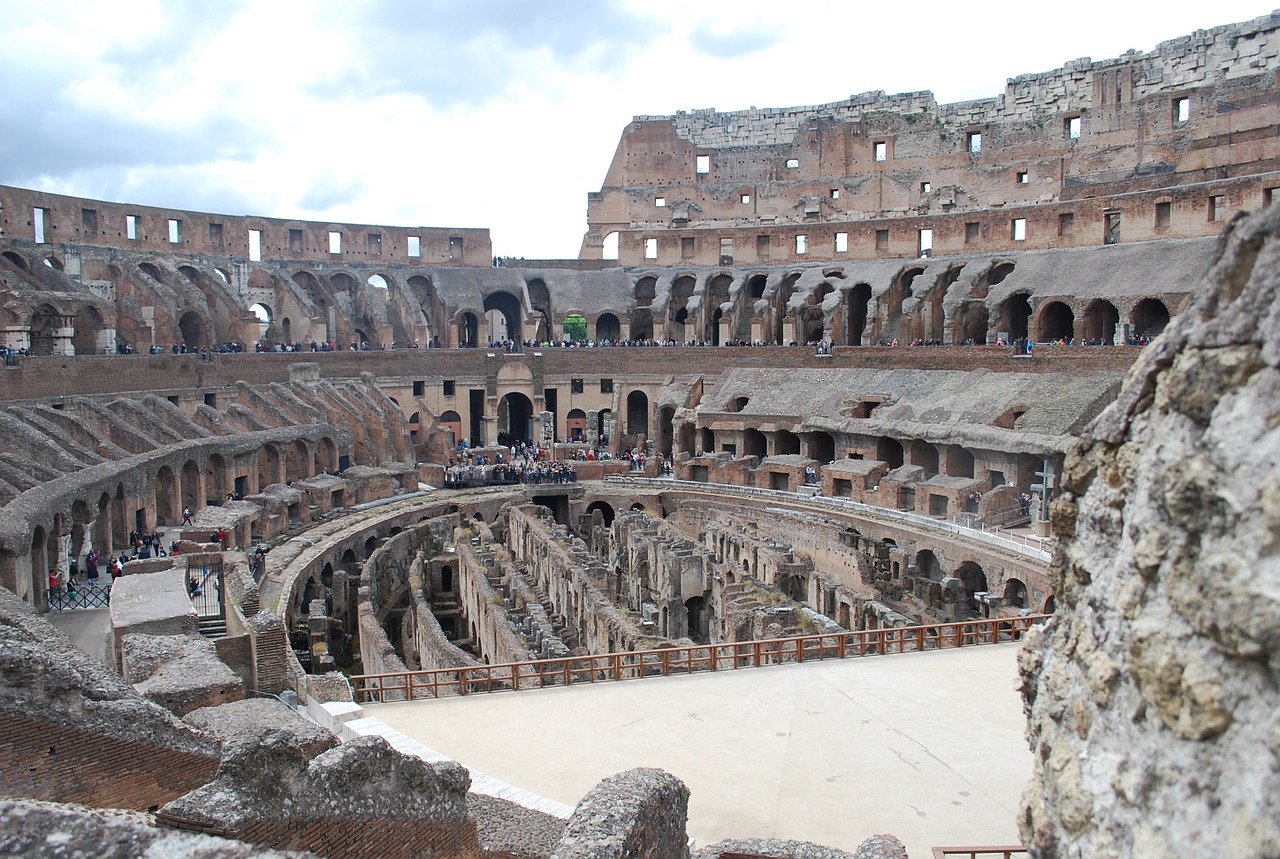I materiali dell'Architettura: Il Calcestruzzo - Seconda Parte// Materials of Architecture: The concrete - Second Part [ITA - ENG]

CCO Creative Commons Pantheon, Roma

Ciao ragazzi,
eccoci pronti a raccontare la storia del calcestruzzo, questo straordinario materiale dalle origini antiche ma, nel contempo, dalle doti rivoluzionarie per le costruzioni moderne… e scopriremo insieme perché! L’altra volta abbiamo visto che cosa si intende per calcestruzzo, adesso cominciamo il consueto viaggio attraverso le architetture di tutti i tempi per capire come, tra periodi di buio e luce, questo materiale è giunto fino al giorno d’oggi.
Insomma, di cose da raccontare ce ne sono perciò, cari amici di steemit, non vi resta che mettervi comodi e, sempre che lo vogliate, leggere quanto segue… buona lettura!
- I primi impieghi
La prima testimonianza di impiego di questa tipologia di materiale risale a circa il 12000 a. C., periodo al quale vengono fatti risalire i reperti archeologici ritrovati in Turchia occidentale. In particolare, tali ritrovamenti suggeriscono che il materiale da costruzione in questione fosse la malta di calce.
Risalgono ai Fenici, nel periodo intorno alla metà del VI millennio a.C., alcune scoperte tecnologiche come un impianto d’irrigazione, ottenuto sfruttando un articolare tipo di malta resistente all’acqua, ottenuta con calce, sabbia e acqua. Questa tecnica si diffuse poi per tutto il Mediterraneo.
Bisogna attendere il VII secolo a.C. perché il popolo greco, appresa la conoscenza della calce viva, la mescoli con del marmo polverizzato, ottenendo così l’intonaco di calce. Altra innovazione tecnologica ottenuta dai greci è la tecnica muraria della colata, che venne riproposta anche dai Romani.
Questa tecnica consisteva nel versare, tra due muri realizzati in pietra, la malta di calce e dei conci, comprimendoli come se le due murature fossero una sorta di casseforme a perdere adatte a quello scopo. Questa miscela compressa prendeva il nome di emplekton. In fine, per garantire una certa stabilità, venivano inoltre collegate le due murature da delle cosiddette pietre di legature, finché la miscela compressa non si fosse indurita.
- Il calcestruzzo ai tempi dei Romani
I Romani erano a conoscenza della tecnica del calcestruzzo, probabilmente, già dalla fine del III millennio a.C., e ne facevano uso con l’impiego della pozzolana, ovvero una pietra proveniente dalla cave nella zona di Pozzuoli, da cui il nome.
All’inizio, l’uso del calcestruzzo era destinato ai templi e alle basiliche, e precisamente alle fondazioni e ai loro basamenti. Fu solo in un secondo momento che questo materiale trovò impiego anche per il riempimento delle murature, a loro volta rivestite con le lastre in pietra.
Fu grazie alla scoperta delle caratteristiche idrauliche di alcuni specifici composti che il cosiddetto opus cementicium, ossia il calcestruzzo romano, cominciò a svilupparsi. Questo materiale era ottenuto dal conglomerato di malta idraulica e materiali inerti: dai più grossi quali pietre, scaglie di tufo e simili, ai più fini come la sabbia e la ghiaia.
Generalmente il legante della malta era costituito dalla sola calce e, a volte, c’era l’aggiunta di sabbia. La composizione della malta giocava un ruolo molto importante e inoltre, quantità e qualità dipendevano fortemente da diversi fattori come il periodo, il luogo, il costo, e così via.
La scoperta della pozzolanica segna una vera e propria svolta nelle tecniche costruttive romane, grazie alla sua capacità di ottenere in tempi brevi l’indurimento della malta in assenza di anidride carbonica. Questo tipo di calcestruzzo venne chiamato dai romani, betonium.
Il calcestruzzo si rese protagonista anche nella costruzione degli archi, delle volte e delle cupole dei più famosi monumenti romani, ma ebbe un ruolo fondamentale soprattutto nella realizzazione dei magnifici acquedotti, opere di cui abbiamo parlato facendo riferimento ai laterizi, con i quali erano rivestiti.
Sono diverse le testimonianze d’uso del calcestruzzo in epoca romana, per citarne alcune: le fondamenta del Colosseo, la cupola del Pantheon, la cupola della Chiesa di Santa Sofia a Costantinopoli ecc.
Ok, miei stimati lettori, per questa sera direi che possiamo fermarci qui. Io, al solito, mi auguro che abbiate gradito la lettura che vi ho proposto e, nel darvi appuntamento al prossimo articolo, vi abbraccio tutti!
L'Ego dice: "Quando ogni cosa andrà a posto troverò la pace".
Lo Spirito dice: "Trova la pace e ogni cosa andrà a posto".

CCO Creative Commons Chiesa di Santa Sofia, Costantinopoli

Hello guys,
here we are ready to tell the story of concrete, this extraordinary material with ancient origins but, at the same time, with the revolutionary qualities for modern buildings... and we will discover together why! The other time we have seen what is meant by concrete, now we begin the usual journey through the architectures of all time to understand how, between periods of darkness and light, this material has come up to the present day.
In short, there are so things to tell, dear friends of steemit, you just have to get comfortable and, if you want, read the following... good reading!
- First uses
The first evidence of use of this type of material dates back to around 12000 BC. C., period to which the archaeological finds found in western Turkey are traced. In particular, these findings suggest that the building material in question was lime mortar.
In the period around the middle of the 6th millennium BC, some technological discoveries date back to the Phoenicians, such as an irrigation system, obtained by exploiting an articulated type of water-resistant mortar, obtained with lime, sand and water. This technique then spread throughout the Mediterranean.
We must wait until the seventh century BC because the Greek people, learned the knowledge of lime, mix it with powdered marble, thus obtaining lime plaster. Another technological innovation obtained by the Greeks is the masonry technique of the casting, which was also proposed by the Romans.
This technique consisted in pouring lime and mortar between two stone walls, compressing them as if the two walls were a sort of disposable formwork suitable for that purpose. This compressed mixture took the name of emplekton. Finally, to ensure a certain stability, the two walls were also connected by so-called binding stones, until the compressed mixture had hardened.
- Concrete in Roman times
The Romans were aware of the technique of concrete, probably, since the end of the third millennium BC, and they used it with the use of pozzolana, or a stone coming from the quarry in the area of Pozzuoli, hence the name.
At the beginning, the use of concrete was destined for the temples and the basilicas, and precisely for the foundations and their bases. It was only later that this material also found use for the filling of the walls, which in turn were covered with stone slabs.
It was thanks to the discovery of the hydraulic characteristics of some specific compounds that the so-called opus cementicium, ie the Roman concrete, began to develop. This material was obtained from the conglomerate of hydraulic mortar and inert materials: from the largest ones such as stones, tufa flakes and the like, to the finest such as sand and gravel.
Generally the mortar binder was made of lime only and sometimes there was the addition of sand. The composition of the mortar played a very important role and furthermore, quantity and quality were strongly dependent on various factors such as the period, the place, the cost, and so on.
The discovery of the pozzolanica marks a real turning point in the Roman construction techniques, thanks to its ability to quickly obtain the hardening of the mortar in the absence of carbon dioxide. This type of concrete was called by the Romans, betonium.
Concrete also became a protagonist in the construction of arches, vaults and domes of the most famous Roman monuments, but played a fundamental role above all in the realization of the magnificent aqueducts, works of which we spoke referring to the bricks, with which they were covered.
There are several examples of the use of concrete in Roman times, to name a few: the foundations of the Colosseo, the dome of the Pantheon, the dome of the Church of Santa Sofia in Constantinople etc.
Ok, my esteemed readers, for this evening I would say that we can stop here. I, as usual, I hope you have enjoyed the reading that I have proposed and, in giving you appointment to the next article, I embrace you all!
The ego says: "When everything goes right I will find peace"
The Spirit says: "Find peace and everything will fall into place"

CCO Creative Commons Colosseo, Roma
Congratulations @mrgreg! You have completed some achievement on Steemit and have been rewarded with new badge(s) :
Click on any badge to view your own Board of Honor on SteemitBoard.
For more information about SteemitBoard, click here
If you no longer want to receive notifications, reply to this comment with the word
STOP